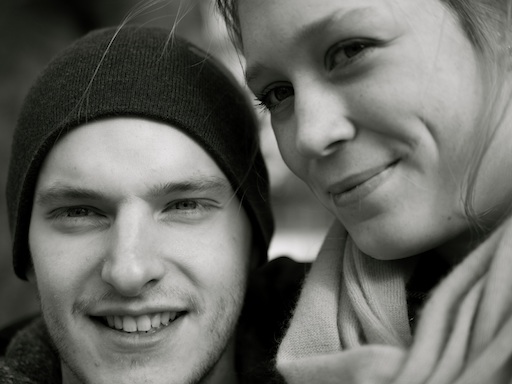Gear Details
GENERAL THOUGHTS:
Gear is one of the main topics, while preparing for the trip. Here, we firstly want to emphasise, that the gear is something individual. Everyone has very specific needs, therefore it is important to reevaluate each idea and place it in your own environment.
Apart from the Te Araroa specific setting (4 possible seasons, very unreliable weather, etc.). Our gear needs to fullfil some specific needs due to personal reasons.
Firstly, Hauke is quite tall (2,08m or 6.8ft), which influences our choices of tents, sleeping pads & bags and makes the shoe question a little bit harder. Secondly, you need to ask yourself where your body has it's weak points, you need to put special care into. Thirdly, you need to calculate the costs of the gear. Everyone wants as lite as possible with the best possible equipment. But in the end, ultralight gear is often ultra expensive. We did a "stock-check" prior and than decided on what needs to be replaced, upgraded or purchased. The gain an overview, you'll find our gear list here.
TENT:
Firstly we planned to buy a TarpTent, but due to a lack of outfitters, selling them in Europe, we searched for other option. Looking for alternatives, our attention caught by the the MSR flylight. Especially, the quadratic entrance matches our needs (big person has to enter the tent) greatly. However, it the end the we decided to by a two-walled tent, due condensation problems in single-walled tents. Tarptents, a US company, has specialized on ultra light tents and offer different options. Finally, we chose the Strato Spire II, a non-free standing double-walled ultra light tent (ca 1200g). In Germany, you can purchase these tents from a shop in Rostock. The owner is very kind and experience and is willing to help. As usual, tents from the US are not seam sealed yet, and needs to be done by yourself. Great instuructions can be found online. Due to bad weather and a drying period of 24h, we had to do it inside and had to be creative about the tent construction ;). The first impression of the tent is great, yet it is to early to make the call. To give the tent the last finish, we added some additional ropes and different stakes.
 | ||||
Old picture of Hauke in front of our Outpost 2 Wechsel tent two years ago in Australia. This tent was a great choice for us, due to the diagonal lying area. However, it is to heavy for the Te Araroa to carry on. We love the idea of using our trekking poles to hold up a shelter.
Post-Trail Comment: We simply loved our Tarp Tent. Honestly, most of the times we slept in the outstanding hut, but when ever needed, the tent was very easy to pitch and provided great shelter. Although it is large sized, we always found a suitable spot to pitch the tent. We did replace the tent pegs with lighter ones with from MSR in advance, which did a great job, too. We did not have a single rip or repair, it never leaked water either. We loved to have two separate entrances and sufficient room to store our backpacks. To sum this up: We would buy the exact same tent again! SLEEPING PAD & BAG:Post-Trail Comment: We used Therm-a-rest Neo Xlite sleeping pads. They were extraordinary comftable and available in a variation sizes. They pack very small and are super lite. Both survived the trail perfectly fine and we slept so well on them. Only thing we would change is that we would bring a pump bag, too. Otherwise it's quite a lot of effort to inflate them and makes you fairly dizzy.
KITCHEN:
To make it short: We already own a Jetboil Flash, which we purchased in Australia before hiking Hinchinbrook Island and we love it. No need to change anything!
Post-Trail Comment: As say before, it's still great and simply safes you a lot of gas. Would take the same device again. If we would have to buy a new one, we would buy the newest wider modle (same volume, just wider). This makes cooking easier and you can store the medium gas bottles in there, too.
TREKKING POLES:
Trekking poles have become famous again for the last years. There are some important advantages for using trekking poles. The most important thing is that they offer higher balance during challenging backcountry hiking and secondly reduce stress for your body. Trekking poles are sold in different materials (aluminium or carbon), pole adjustment mechanisms (twist lock or external lever lock), number of sections (two or three), basket sizes, shock absorbers, weight and grips.
+ a little flexible, therefore more break resistent + cheaper - heavy Carbon + light weight + stable - expensive - breaks more easily, when bend
SHOES:
Shoes is a very important topic, if not the most important. Wrong shoes can spoil your whole trip. There are hundreds of different options for shoes: bear foot shoes - trail runners - hiking boots, mesh - gore tex - leather and everyone has a different opinion about this. Here, we would like to give you some support on general topics. It can help you to narrow the decision down a bit. But we can't really tell you, what will be the best shoe for you. We won't discuss bare foot shoes, since we don't have any experience on them. We just want to let you know, that some people do wear them on long distance trails. 1. Look at your feet! Foot malformations are common! Some have flatfeet, some have skew feet, some have a hallux valgus. Include your foot anatomy in your choice of shoes. Some shoes, for example Asics, often have a supination support included. This does make sense, if your feet "roll" inward, but can push you into over supination, if your foot arches properly. The best is to visit a local sports shoe shop and get your foot anatomy analysed. 2. Look at our path! What type of ground are going to walk on most? Are you going to walk/run mostly on streets or well maintained paths? Are you going to walk al lot on slippery rocks? Will you have to walk on ice or snow? The type of track defines the shoe sole you are going to need. 3. What type of shoes to pick? Most of the people use trail runners. As Europeans like to wear "real" hiking boots, it is somehow a little bit difficult to get used to idea of trail runners - at least it was for me. Here some ideas, while we did pick trail runners in the end.
While boots offer you some ankle support (no, they don't fully protect your from a sprained ankle), trail runners don't do this. Still with muscle training, you'll be able to strengthen your muscle tone, protecting your ankle. However, this is still an individual decision.
Trail runners give you the great benefit, that they weigh much less than real hiking boots. The weight on your feet is also weight you are carrying. Light-weight shoes simply save some energy.
Finally we chose:
Hauke: Merrell Moab Ventilator Julia: La Sportiva Ultra Raptor It is important to note, that you always need to follow your own individual needs. It's great to benefit of others experience, but the most important thing is, that YOU feel comfortable and confident about your shoes. YOU'LL have to walk in them many miles and therefore they need to be perfect for YOU and for no one else. Post-Trail Comment: As we figured on the trail, shoes are the most important and the most difficult topic. Just after five days of walking, Julia ended up with an Achilles tendon inflammation. As it seemed, our feet and ankles weren't prepared for trail runners. We ended up, no walking the Richmond Rage track, had to hitch out and buy extremely expensive hiking boots in Nelson. After a couple of weeks of walking and training, Julia was able to switch back to her trail runners. Disclosures: For sharing affiliate-links, we received discount on some products. The Hyberg Attila Backpack of Julia was fully sponsored by http://greenline.de.com/. |















Nice blog, I like these tents. I saw one article yesterday regarding ozark trail tents on http://leisurelegend.com/camping-gear-ozark-trail/, that's very nice.
ReplyDeleteI was really searching for such a nice post and got here...Thanks for sharing such a nice information, its beneficial for me...Keep sharing more reviewworldore
ReplyDeleteGraceful written content on this blog is really useful for everyone same as I got to know. Difficult to locate relevant and useful informative blog as I found this one to get more knowledge but this is really a nice one. anteglobalreview
ReplyDeleteAll the contents you mentioned in post is too good and can be very useful. I will keep it in mind, thanks for sharing the information keep updating, looking forward for more posts.Thanks HeroicReviewBlog
ReplyDelete